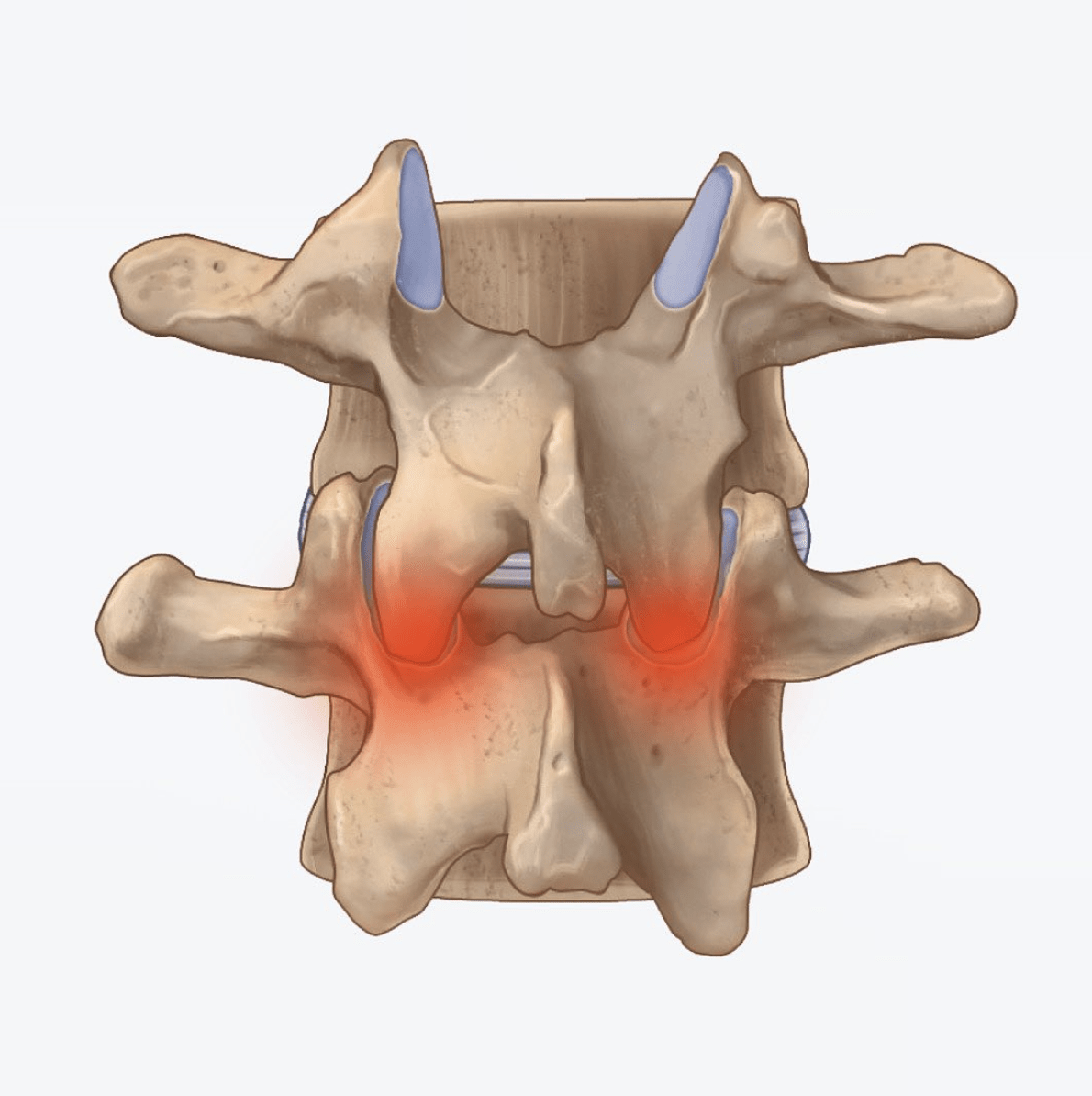
Facet joints (otherwise called zygapophyseal joints) are small synovial joints (a bit like your knee or your hip joint) between two vertebrae. Either side of the bone is lined with hyaline cartilage and inside the joint is synovial fluid, just like any other typical big joint in the body. The synovial joints perform an important function in the spine but let’s think about structure first, before we focus on what these joints do.
Motion segments
At each level, two facet joints and the intervertebral disc form something known as the spinal motion segment (or the three-joint complex). The joints and the disc work together as the motion segment to provide stability to the spine and prevent movements that could potentially damage the spinal cord. The main function of the facet joints is to guide movement. The shape and orientation of the facet joint varies in different parts of the spine, explaining why the cervical, thoracic and lumbar regions move slightly differently. In the lumbar region, the angle of the facet joints is mostly vertical (parallel with the sagittal plane), allowing more movement in flexion and extension. In the thoracic region, the facet joints are more obliquely aligned allowing less flexion and extension, but more rotation. The cervical spine has a unique combination of facet joint orientations that allows a large range of movement in multiple directions.
Degeneration of the facet joints
Degenerative changes to the facet joints are common; the cartilage in facet joint surfaces can wear, causing inflammation and pain. Wear can also cause instability. When unstable, the facet joints can move excessively. Of most consequence is when they allow forward movement or anterolisthesis (also called spondylolisthesis), which is a forward shift of one vertebra on the one below it. The opposite can also occur – like any other joint, when facet joints degenerate, they can become stiff and enlarge causing a limited range of motion.Facet joint degeneration can also cause stenosis, which is a narrowing of the spinal canal. As the joints undergo the process of osteoarthritis, they can develop growths called osteophytes or bone spurs which push on spinal nerves, causing arm or leg pain.
To summarize, the facet joints are structures that are common in the body but unique in the spine, because they form two of the three components of the motion segment. They are responsible for guiding motion and helping with stability and they can undergo degeneration in the form of inflammation, instability and degeneration with osteophyte formation.
